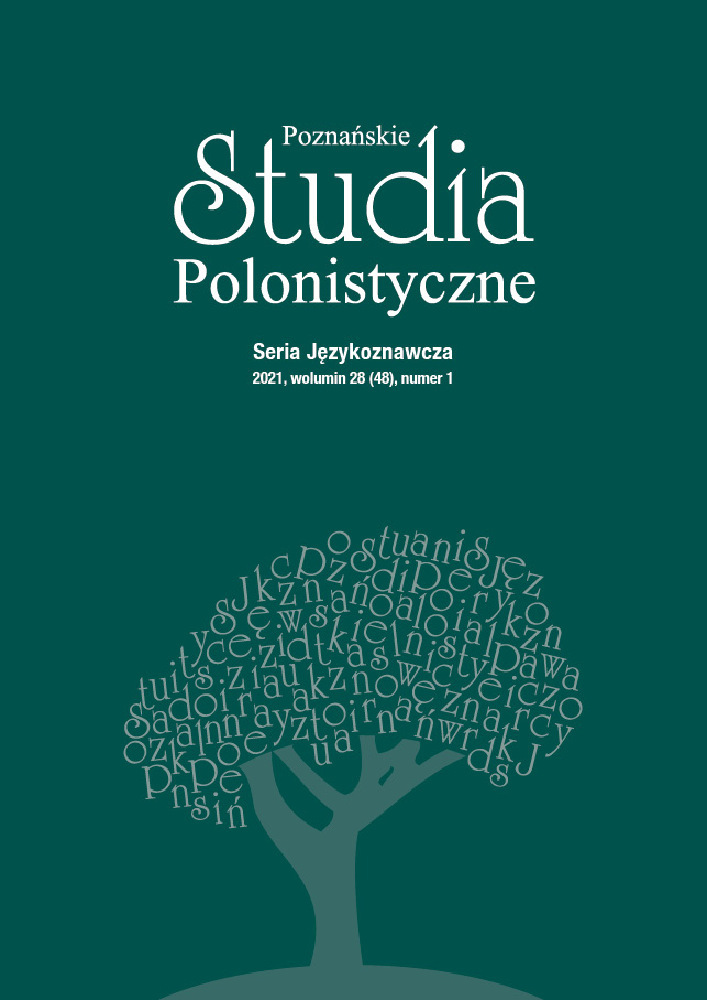Abstract
The article discusses the idea of legal design as an approach to legal communication that takes into account the needs of the readers of a normalised legal text and combines linguistic and non-linguistics techniques. It includes examples of legal regulations that refer to the intelligibility and clarity, also discussing the communication challenges that authors of legal texts are faced with. The aim of the article is to explain the term ‘legal design’ whose role as a tool for ensuring communicativeness is becoming more widely recognised by the specialists in the practice and theory of law and linguistics.
References
Choduń Agnieszka, Zieliński Maciej (2012), Język urzędowy a język urzędników. Precyzja, adekwatność, komunikatywność [referat wygłoszony podczas I Kongresu Języka Urzędowego, 30–31 października 2012 roku, „Język urzędowy przyjazny obywatelom”].
Doroszewski Witold, red. (1958–1969), Słownik języka polskiego, t. 1–11, Warszawa, https://tinyurl.com/jadyv7tw [dostęp: 23 kwietnia 2021].
How Plain English Works for Business. Twelve Case Studies (1984), t. 1, Office of Consumer Affairs, U. S. Department of Commerce, https://tinyurl.com/yy8o734l [dostęp: 20 stycznia 2021].
Jadacka Hanna (2006), Poradnik językowy dla prawników, Warszawa.
Matczak Marcin (2010), Dwupoziomowość języka prawnego w derywacyjnej koncepcji wykładni i jej znaczenie dla współczesnych sporów w anglosaskiej teorii interpretacji prawniczej, w: W poszukiwaniu dobra wspólnego. Księga jubileuszowa Profesora Macieja Zielińskiego, red. Stanisław Czepita, Agnieszka Choduń, Szczecin.
Perelman Chaïm (2002), Imperium retoryki. Retoryka i argumentacja, przeł. Mieczysław Chomicz, Warszawa.
Piekot Tomasz, Zarzeczny Grzegorz, Moroń Ewelina (2019), Standard „plain language” w polskiej sferze publicznej, w: Lingwistyka kryminalistyczna. Teoria i praktyka, red. Monika Zaśko-Zielińska, Krzysztof Kredens, Wrocław, s. 197–214.
Poprawa Marcin (2012), Kancelaryjna rutyna czy niezamierzona propaganda? Rozmywanie się wzorców gatunkowych i stylistycznych we współczesnej komunikacji administracyjnej, w: Akty i gatunki mowy w perspektywie kulturowej, red. Anna Burzyńska-Kamieniecka, Wrocław (Język a Kultura, t. 23), s. 223–241.
Siwek Kacper (2016), Komunikatywność tekstu prawnego a derywacyjna koncepcja wykładni prawa (aspekt rozumienia normy sankcjonowanej), „Ruch Prawniczy, Ekonomiczny i Socjologiczny”, t. 78, nr 4, s. 69–79.
Stelmach Jerzy, Brożek Bartosz (2006), Metody prawnicze. Logika, analiza, argumentacja, hermeneutyka, Kraków.
Wronkowska Sławomira (2005), Podstawowe pojęcia prawa i prawoznawstwa, Poznań.
Wydick Richard C. (1978), Plain Language for Lawyers, [b.m].
Zieliński Maciej (2012), Wykładnia prawa. Zasady, reguły, wskazówki, Warszawa.
License
Authors
The Author declares that they are entitled to personal and property (material) copyrights to their work published in “Poznańskie Studia Polonistyczne. Seria Językoznawcza”, and that these rights are not limited by the terms of Author’s agreement. The Author warrants the originality, authorship, and sole ownership of all rights to the Work, and affirms that they have the right to grant all kinds of licenses hereinabove without infringing on the intellectual property rights of any third party, including personal rights.
The Author(s) retains copyright to their article and the right to freely dispose of the work, granting Adam Mickiewicz University in Poznań a non-exclusive, royalty-free licence under the Attribution-NoDerivatives 4.0 International (CC BY-ND 4.0) Creative Commons licence to use the Work without territorial restrictions for an indefinite period in the fields of use designated in the Author’s agreement.
Users
Interested Internet users are entitled to use works published in „Poznańskie Studia Polonistyczne. Seria Językoznawcza” since 2016 under the following conditions:
- attribution - obligation to provide, together with the distributed work, information about the authorship, title, source (link to the original work, DOI) and the license itself.
- no derivatives - the work must be preserved in its original form, without the author's consent it is not possible to distribute the modified work, such as translations, publications, etc.
Copyrights are reserved for all texts published before 2016.
Other
Adam Mickiewicz University in Poznań retains the right to the journal as a whole (including its layout, graphic design, title, cover design, logo and more).
